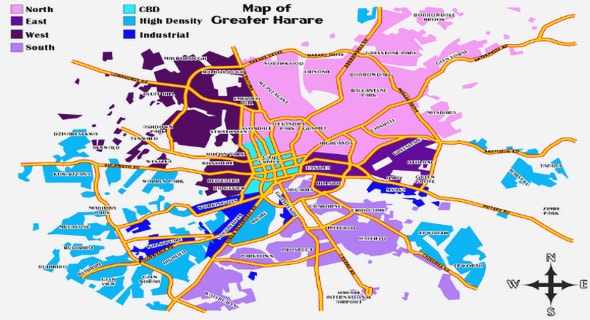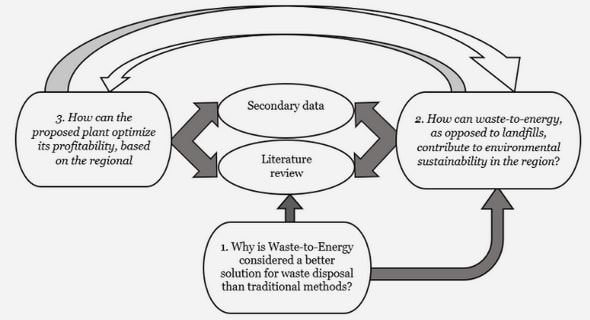Get Complete Project Material File(s) Now! »
Methodology of Research
We present in this chapter our research methodology, elaborating on the methods and approaches we have chosen for this research. This part will begin by describing the research philosophy of nominalist ontology and constructionist epistemology and the abductive research approach, the qualitative method and the design of the multiple case study. After that, an explanation of our approach to the literature review will be presented, as well as how the data were collected and handled. The quality criteria and ethical considerations will be the described last as we explain what we have done to increase trustworthiness and ethical practices in our research.
Research Philosophy
This study adopts a nominalist ontological and constructionist epistemological approach. Ontology is about the nature of reality and existence, and epistemology refers to the philosophy of knowing where knowledge is of significance only if it is based on observations and is a result of empirical verification (Easterby-Smith, Thorpe & Jackson, 2015). Furthermore, nominalism implies that social reality is created through language & discourse (Easterby-Smith, Thorpe & Jackson, 2015). In a similar fashion, constructionism is the process of creating reality through people’s actions and interactions (Easterby-Smith, Thorpe Jackson, 2015). The link between the ontological and the epistemological approaches appears here in the link between constructionism and nominalism. According to Easterby-Smith, Thorpe and Jackson (2015), constructionism is fitting most with nominalism.
Furthermore, the constructionist epistemological approach aims to draw a rich picture of life (Easterby-Smith, Thorpe & Jackson, 2015), and the nominalist ontology implies that any decision is taken after discourse and discussions among the actors (Easterby-Smith, Thorpe & Jackson, 2015). In our case, this picture is of the reshoring decision making, and of why and more importantly how the decision is taken in real life.
The constructivist view of research distinguishes between instrumental and expressive studies. Instrumental studies involve looking at specific cases to develop general principles, whereas expressive studies involve investigating cases because of their unique features (Easterby-Smith, Thorpe & Jackson, 2015). Therefore, this study is instrumental as it focuses on a few specific cases to derive general understanding of the reshoring decision making and how it is planned and performed.
Research Approach
Scientific Approach
There are different scientific approaches that are available to researchers; inductive, deductive, and abductive. The inductive approach to research is a bottom-up approach, where the study starts with the collection of empirical data (Dahlberg & McCaig, 2010). The analysis of the data contributes to an understanding of the reality and generates theories (Dahlberg & McCaig, 2010). A deductive approach, on the other hand, is a top-down approach where the researcher uses theory as a starting point. A number of hypotheses are derived from the theory and these are tested empirically (Dahlberg & McCaig, 2010).
A third approach exists as well, that is the abductive approach. According to Dubois and Gadde (2002), the abductive approach is not to be seen merely as a mixture of the two other approaches. The abductive approach is used if the researcher wants to discover new things — other variables and other relationships (Dubois & Gadde, 2002; Dubois & Gadde, 2014). Dubois and Gadde (2014) also confirm that the ultimate objective with abductive approach is to match the theory with the reality. Kovács and Spens (2005), on the other hand, consider that the abductive approach as a combination of both deductive and inductive. They argue, however, that the abductive approach process differs from the other two approaches, which can be showed by the following model:
Dubois and Gadde (2002) call this process a ‘systematic combining’ grounded in an ‘abductive’ logic for case studies aimed at theory development. It is a process where theoretical framework, empirical fieldwork, and case analysis evolve simultaneously (Dubois Gadde, 2002). This “going back and forth” between the theory and empirical data, enhances the researcher’s understanding of both the theory and the empirical phenomenon, according to Dubois and Gadde (2002). This also may lead to the expansion or modification of the theoretical model. In other words, the objective of this type of research is confronting the theory with the empirical world.
This study adopts the abductive approach as the aim is to create new concepts from the empirical data comparing them to the existing theory (The process of implementing this approach in the data analysis is detailed in section 3.6.2). Another reason for choosing this approach is because the aim of this study is to improve the theoretical model chosen for the analysis. In addition, this approach fits with the research philosophy, the method of case study, and the practical topic of the research.
Methodical Approach
There are two methods of research, quantitative and qualitative. Some researchers even use a mixture of both. Qualitative methods deal with difference in kind, while quantitative methods deal with difference in numbers/degree (Dahlberg & McCaig, 2010). While qualitative approaches use general descriptions to describe or explain phenomena and to gather deep and particular information, quantitative approaches use numerical means and rely on counting and statistical analysis and gather broad and general information (Dahlberg & McCaig, 2010).
A qualitative approach is mostly suitable when the purpose of the research is to study how things work or/and systems work and to understand how and why context matters (Easterby-Smith, Thorpe & Jackson, 2015). It provides rich and detailed descriptions of the studied phenomenon from the participants perspective.
The qualitative approach is what we use in this study, since it suits the topic, and the objective of the study that is to probe deeply into the phenomenon of reshoring decision making, how it is performed, and how the contextual factors affect the decision to reshore.
Research Design
Research design is the overarching strategy for finding useful answers to problems (McCaig, 2015). The case method looks in depth at one, or a small number of, organizations, events or individuals, generally over time (Easterby-Smith, Thorpe & Jackson, 2015).
We use a multiple case study method in this study because it is a qualitative method that allows the researcher to analyze the cases across settings and within each setting (Baxter & Jack, 2008), which fits with the objective of this research. In addition, the phenomenon of the reshoring decision making process requires probing into more than one case to be able to generalize, since each case is unique in some ways and shares some aspects with other companies, which is what we can use to generalize from.
Yin (1994) argues that a multiple case study has similar traits to a single case study, and only that a multiple case study uses more individuals or phenomena. The difference according to Yin (1994) between these two approaches is that multiple case studies are more robust and are considered more compelling than a single case study.
The need to gain a deep understanding of the experience of several firms and to get a rich picture of the topic in its context makes this method considerably useful. However, since the phenomenon of reshoring is new and not many organizations who have implemented it and succeeded exist yet, the number of the case companies used in this paper is limited to three companies.
Another reason that justifies the use of multiple case study is that it provides a better explanation than a single case study (Dubois & Gadde, 2002). Using a multiple case study also benefits the research by having more perspectives from the cases. Furthermore, the end result is richer and stronger as a multiple case study brings several patterns together (Dubois & Gadde, 2014).
The multiple case study fits with the purpose of the paper, how organizations plan and decide on reshoring in real-life. Focusing on multiple case organizations enables the researcher to compare between the different cases looking for a trend among them and get more robust data regarding this field of topic.
This method goes well with the constructionist epistemological philosophy of research (Easterby-Smith, Thorpe & Jackson, 2015), and as we aim to draw a rich picture of the reshoring decision making and to generalize based on observations, a multiple case study is a good choice for this research.
However, one caution regarding multiple case study, according to Baxter and Jack (2008), is that a multiple case study is a very time-consuming method, and expensive to conduct. This is something that researchers must consider when using multiple case studies. This is avoided in this study as the number of cases included is not that wide and it limited to three companies only, as mentioned before.
Literature Review Method
“A literature review is an analytical summary of an existing body of research in the light of a particular research issue” (Easterby-Smith, Thorpe & Jackson, 2015, P. 59). The objective is to learn from the previous research about a certain topic.
There are two kinds of literature reviews: traditional literature reviews and systematic literature reviews. A traditional literature review summarizes a body of literature drawing conclusions about a certain topic (Jesson, Matheson & Lacey, 2011). A systematic review, on the other hand, identifies, appraises and synthesizes all relevant studies on a certain topic (Petticrew & Roberts, 2006)
Since the topic of reshoring decision making and reshoring process is new and lacks sufficient studies and researches, we use the traditional literature review method. This is because systematic reviews consider peer-reviewed academic articles only and tend to favor journal articles over other sources such as book chapters and reports (Easterby-Smith, Thorpe & Jackson, 2015). Our intention here is to comprehensively include the different kinds of literature that exist on the topic of reshoring decision making and reshoring process. In addition to the comprehensiveness of the traditional literature review method, it also helps add new insights on the topic (Jesson, Matheson & Lacey, 2011). However, this method is accused of being biased and has no formal methodology and lacking transparency (Jesson, Matheson & Lacey, 2011). We tried to avoid those drawbacks in detailing our method of search, even though it is not as detailed as a systematic literature review.
The sources of information we use in this study are mostly articles and reviews, regardless if they were peer-reviewed or not. As for searching for relevant literature, this was performed under the period from January to February 2018, using the academic search engine Web of Science, Google scholar as well as Jönköping University library database. It is reasonable to assume that more recent articles may have been published after this period, but the time limitation and the nature of this study as being a thesis with a pre-defined submission date, it was not possible to include all the literature up to the date of the thesis submission.
To include as much literature as possible, we used the snowballing method during our search and reading of the articles to reach more articles that had not shown up during our preliminary research. In other words, during the reading of the articles and when we found a quote or an idea that is relevant to our topic, we went to the reference and searched for that article to include it in the literature review list. Almost 30% of the literature used for this study was added in this way since many articles did not show up during our first research. The articles and reviews were then summarized, highlighting the most relevant points to our research. The next step was to sort out and arrange the main points into themes. Finally, we wrote the literature review considering the different views and perspectives following an argumentative method.
Data Collection
Before going into the data analysis and before and during data collection, managing the data of the research is important to keep track of the interviews and to keep the data safe (Smith & Davies, 2015). Therefore, a research diary was used to register the activities of the research such the dates of interviews and references to important articles.
On the other hand, and since transcription of every detail of the data obtained during the interviews is a time consuming and not always valuable process, selective transcription with reference to expressive quotes was used. The interviews were recorded after the consent of the interviewee to refer to them anytime we needed to.
The empirical data collection method used was semi-structured in-depth interviews. In other words, the interviews were guided-open interviews in the sense that they were based on a list of questions that were addressed in a more flexible manner as the interviewees talked and answered the questions. The reason behind this, in our opinion, is that since the topic is about a process that goes through many phases and considers many factors, elaboration on each phase and factor or consideration is necessary. This method would be more useful than asking short questions and receiving yes-or-no, or short answers.
As for the type of the interviews, we used both remote and face-to-face interviewing. Remote interviewing offers more flexibility, as managers feel less committed to host the researcher. However, it may not benefit the researcher as it lacks the immediate contextualization, depth and nonverbal communication of face-to-face interviews (Easterby-Smith, Thorpe & Jackson, 2015). Therefore, combining both remote and face-to-face provides flexibility without affecting the quality of information and communication required for this study.
As for the sampling strategy, the sample size depends on the nature of the research (Ritchie, Lewis, Elam, Tennant & Rahim, 2003), and in qualitative research the sample size tends to be smaller (Patton, 2002). Therefore, and because most of the companies we contacted (18 companies in total both in Sweden and Norway) hesitated to reveal their internal processes to the public, the sample was limited to few companies as previously mentioned. Another reason for this, as we believe, is that the focus on few cases helps the researcher get a richer and deeper understanding of the topic or phenomenon under research.
Five interviews were held under the period from March to April 2018, with approximately 1-1:30 hours long for each interview. In this way, the data used was mostly primary data, with a minor use of secondary data when possible, such as news articles, and the company websites. Even though the use of the secondary data such as the company websites was comparatively limited, these websites provided a useful amount of the secondary data even though these data are marginal in terms of scope and do not reach the level of the primary data used in this research. Table 4 below provides some information about the interviews and the interviewees.
Table of Contents
1. Introduction
1.1 Background
1.2 The Drivers of Reshoring
1.3 Research Problem
1.4 Research Purpose
1.5 Research Question
1.6 Structure of the research
2. Literature Review
2.1 Reshoring Decision Making Process
2.2 The Reshoring Process
3. Methodology of Research
3.1 Research Philosophy
3.2 Research Approach
3.3 Research Design
3.4 Literature Review Method
3.5 Data Collection
3.6 Data Analysis
3.7 Research Quality
3.8 Research Ethics
4. The Empirical Study
4.1 Ewes AB
4.2 PWS Nordic AB
4.3 Dinbox AB
5. Analysis
5.1 The Type of the Reshoring Decision
5.2 The Factors of the Reshoring Decision
5.3 The Decision-Making Process
5.4 The Modified SSEM Framework
5.5 The Modified SSEM Framework compared to the Original One
6. Conclusion
6.1 Conclusions
6.2 Theoretical and Empirical Contributions
6.3 Limitations
6.4 Suggestions for Future Research
7. Reference list
GET THE COMPLETE PROJECT
The Reshoring Decision Making Process


